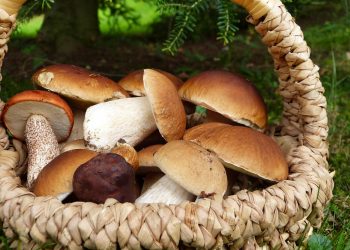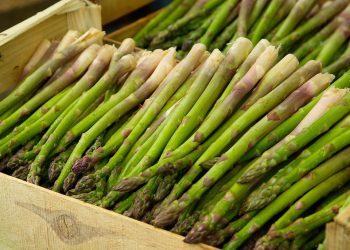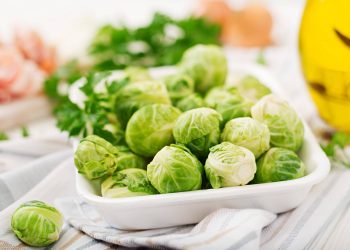Contents
5 Millet Recipes That Supercharge Your Metabolism
Did you know that millet, often overlooked in the grain aisle, has been a staple in various cultures for thousands of years? This tiny seed packs a big nutritional punch and can be a game-changer for your metabolism. Let me take you on a journey through five delicious millet recipes that not only tantalize your taste buds but also help rev up your metabolic engine.
What Makes Millet a Metabolism Booster?
Before diving into the recipes, let’s chat about why millet is worth your attention. It’s gluten-free, high in fiber, and rich in essential nutrients like magnesium, phosphorus, and B vitamins. Fiber is particularly important for metabolism; it helps regulate blood sugar levels and keeps you feeling full longer, which can prevent overeating. Plus, millet has a low glycemic index, meaning it releases energy slowly, keeping your energy levels steady throughout the day.
1. Millet Bowl with Roasted Vegetables
Ingredients:
- 1 cup millet
- 2 cups water
- 1 zucchini, diced
- 1 bell pepper, diced
- 1 red onion, chopped
- 2 tablespoons olive oil
- Salt and pepper to taste
- Fresh herbs (like parsley or basil) for garnish
Instructions:
-
Cook the millet: Rinse millet under cold water, then combine with water in a pot. Bring to a boil, then reduce to a simmer, cover, and cook for about 20 minutes or until the water is absorbed.
-
Roast the veggies: Preheat your oven to 400°F (200°C). Toss zucchini, bell pepper, and onion with olive oil, salt, and pepper on a baking sheet. Roast for 20-25 minutes until they’re tender and slightly caramelized.
-
Combine: Fluff the cooked millet with a fork and serve topped with the roasted vegetables. Garnish with fresh herbs.
Why It Works:
This bowl is not just colorful and vibrant but also a fiber powerhouse. The combination of complex carbohydrates from millet and the vitamins from the veggies provides sustained energy, making it a perfect meal for metabolism support.
2. Millet Porridge with Nuts and Berries
Ingredients:
- 1 cup millet
- 3 cups almond milk (or any milk of choice)
- 1 tablespoon maple syrup (optional)
- ½ cup mixed nuts (almonds, walnuts, pecans)
- 1 cup mixed berries (fresh or frozen)
- A pinch of cinnamon
Instructions:
-
Cook the millet: Rinse millet and combine it with almond milk in a saucepan. Bring to a boil, then reduce heat and simmer for about 25 minutes until creamy.
-
Add flavors: Stir in maple syrup (if using), cinnamon, and let it cook for another 5 minutes.
-
Serve: Top with nuts and berries for an added crunch and sweetness.
Why It Works:
This hearty porridge is a fantastic breakfast option that fuels your day. The healthy fats from nuts and the antioxidants from berries work together to enhance metabolism and overall health.
3. Millet Salad with Chickpeas and Feta
Ingredients:
- 1 cup cooked millet
- 1 can chickpeas, drained and rinsed
- 1 cup cherry tomatoes, halved
- ½ cucumber, diced
- ¼ cup feta cheese, crumbled
- 2 tablespoons olive oil
- Juice of 1 lemon
- Salt and pepper to taste
- Fresh mint for garnish
Instructions:
-
Mix the ingredients: In a large bowl, combine cooked millet, chickpeas, tomatoes, cucumber, and feta.
-
Dress it up: In a small bowl, whisk together olive oil, lemon juice, salt, and pepper. Pour over the salad and toss gently.
-
Garnish: Finish with fresh mint before serving.
Why It Works:
This salad is a refreshing option that combines protein from chickpeas and healthy fats from olive oil. The fiber from millet and chickpeas aids digestion and keeps your metabolism running smoothly.
4. Spicy Millet and Lentil Patties
Ingredients:
- 1 cup cooked millet
- 1 cup cooked lentils
- 1 small onion, finely chopped
- 2 cloves garlic, minced
- 1 teaspoon cumin
- 1 teaspoon chili powder
- 1 egg (or flax egg for vegan)
- Salt and pepper to taste
- Olive oil for frying
Instructions:
-
Combine ingredients: In a bowl, mix cooked millet, lentils, onion, garlic, spices, and egg. Season with salt and pepper.
-
Form patties: Shape the mixture into patties.
-
Cook: Heat olive oil in a skillet over medium heat. Fry patties for about 4-5 minutes on each side until golden brown.
Why It Works:
These patties are packed with protein and fiber, making them incredibly filling. The spices can also give your metabolism a little extra boost. Plus, they’re versatile—serve them on a salad, in a sandwich, or with a side of yogurt.
5. Millet and Vegetable Stir-Fry
Ingredients:
- 1 cup cooked millet
- 2 cups mixed vegetables (like broccoli, bell peppers, and carrots)
- 2 tablespoons soy sauce or tamari
- 1 tablespoon sesame oil
- 1 tablespoon ginger, grated
- 2 cloves garlic, minced
- Green onions for garnish
Instructions:
-
Sauté veggies: In a large skillet, heat sesame oil over medium heat. Add garlic and ginger, sauté for 1 minute, then add mixed vegetables. Cook until tender.
-
Combine: Stir in cooked millet and soy sauce, mixing well to combine. Heat through.
-
Garnish: Top with green onions before serving.
Why It Works:
This stir-fry is a quick and easy meal that’s full of flavor. The combination of protein-rich millet and nutrient-dense vegetables makes it a great option for boosting metabolism.
FAQs
1. Is millet gluten-free?
Yes! Millet is naturally gluten-free, making it a great alternative for those with gluten sensitivities or celiac disease.
2. Can I substitute millet for rice or quinoa?
Absolutely! Millet can be used in place of rice or quinoa in most recipes. It has a slightly nuttier flavor but offers similar nutritional benefits.
3. How can I store cooked millet?
Cooked millet can be stored in an airtight container in the refrigerator for up to a week. You can also freeze it for longer storage.
4. Are there any health benefits to eating millet?
Yes! Millet is high in fiber, which aids digestion, and contains essential nutrients that support heart health, bone health, and metabolic function.
Conclusion
Incorporating millet into your diet can be a delightful way to supercharge your metabolism while enjoying a variety of tasty dishes. From savory bowls to sweet porridge, the versatility of millet is boundless, and its health benefits are significant.
As you experiment with these recipes, remember that variety is key in any diet. Mix and match ingredients, try different spices, and tailor these dishes to your palate. Research is ongoing, and while the benefits of millet are promising, every individual’s body responds differently. So, have fun in the kitchen and enjoy the journey toward a healthier you!
This article is for educational purposes only and is not a substitute for professional medical advice. Always consult a qualified healthcare provider before making changes to your health routine.
References
-
Reddy, N. R., & Pierson, M. D. (1994). Nutritional and health benefits of millet grains. Journal of Food Science, 59(3), 495-500. https://doi.org/10.1111/j.1365-2621.1994.tb07263.x
-
Fardet, A., & Boirie, Y. (2019). Whole grains and the metabolic syndrome: A systematic review of the literature. Nutrients, 11(7), 1511. https://doi.org/10.3390/nu11071511
-
USDA. (2021). FoodData Central. Retrieved from https://fdc.nal.usda.gov
Get Your FREE Natural Health Guide!
Subscribe now and receive our exclusive ebook packed with natural health tips, practical wellness advice, and easy lifestyle changes — delivered straight to your inbox.














